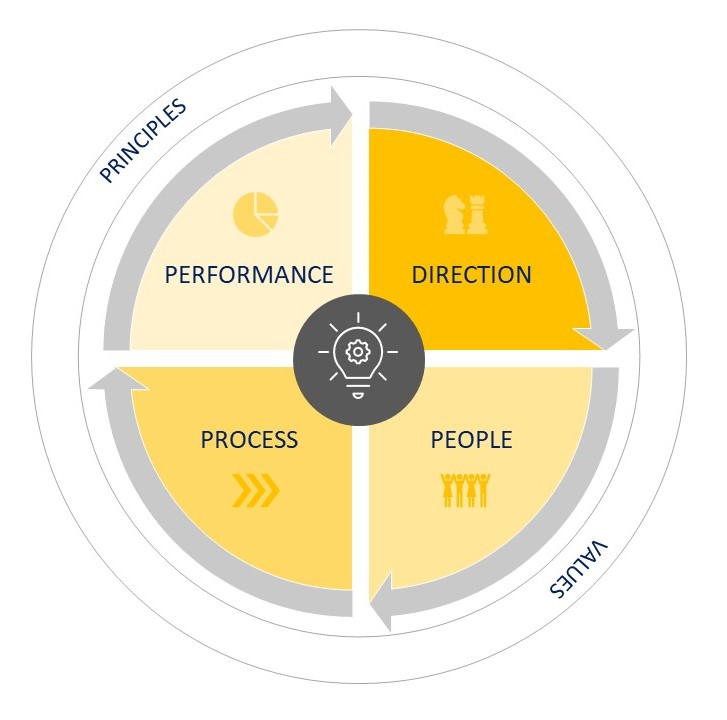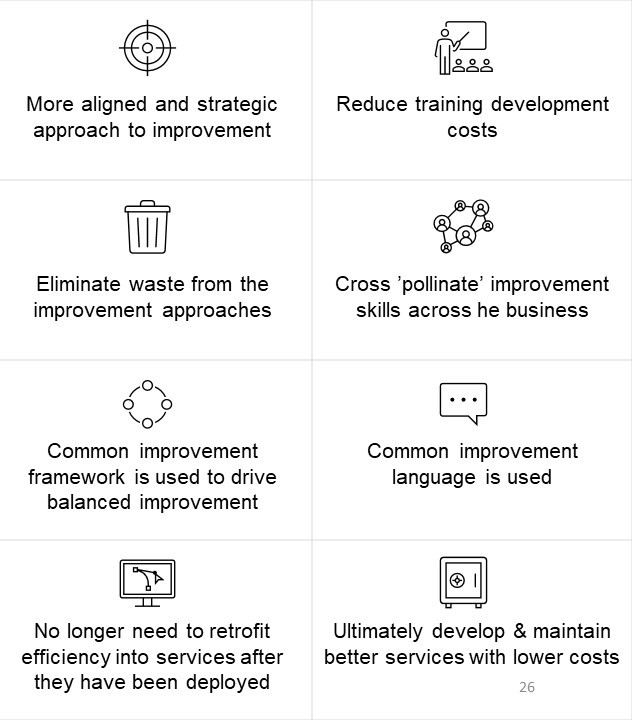
The path to service excellence
The global service sector is becoming increasingly competitive, and companies are continually looking for new ways to reduce costs whilst improving the quality of their existing services. But what’s the best approach to do this? A quick search of the internet will provide a plethora of different improvement approaches ranging from agile, service design and lean, but which one is the best for your business?
The importance of the service sector
During the 20th century, manufacturing has been the dominant business sector throughout much of the developed world. However, over the past decade there has been a rapid change with the service sector now taking over. This rise has been so rapid that in 2019 the service sector globally accounted for 55% of Gross Domestic Product (GDP) and 45% of all employment in developed nations (Gill, 2021). Over the next 5 to 10 years this growth is expected to continue with developed countries now considering the service sector to be their future source of their economic growth (Piercy & Rich, 2008, pp. 54-76).
Driving your business forward
With increased growth in the sector comes increased competition. Well established service providers have to compete on not just service innovation, but also improve their service quality and reduce their costs. Approaches such as lean, agile, and service design have all been successfully deployed in a range of different companies to meet these demands however, a quick search of the internet will also reveal many failed examples as they can be expensive to manage, generate complexity and be hard to sustain. Even worse when the multiple approaches are being used within a business, it can result in the duplication of resources and potentially confuse employees as different areas of the business use different improvement approaches.
So what’s the answer?
“Does this mean I need to throw out my existing improvement approach and start again?” No, in reality there is no silver bullet to solve all problems. The most appropriate approach is the one that best suites the maturity of the business, its culture, and the type of services it provides. An alternative approach is to use the operational excellence concept which acts as an overarching framework to tie the different improvement approaches together.
How does it work?
The concept seeks to build a unified approach to improvement by establishing a single-minded focus with its employees to continually strive to be better in all aspects of their work, each and every day. The framework itself is made up of 4 key business development areas. These are:
- Direction: This area focuses on the development and deployment of a single improvement strategy that helps the business define what they want to become and how they will achieve it.
- People: A company’s employees are its most important asset. This area ensures that there is a constant focus on people development and that teams are autonomous, engaged and collaborative.
- Process – Large, well-established companies can have complex structures, systems, and processes, that span multiple countries. This area focuses on reducing complexity through structured problem-solving.
- Performance – Measurement is the basis of all improvement and without it, it is impossible to know how effective or efficient a business is. This area ensures that teams have clear, focused performance measures that they can influence and use to track and analyse their performance.

What are the benefits?
There are a number of benefits to using operational excellence with first being a reduction in the complexity caused by running multiple improvement approaches. It also helps ‘fill the gaps’ between the different approaches. As they are focused on improving specific areas such as service design or service delivery, it means that there are natural boundaries that exist between them. Process steps, roles or responsibilities that fall between these gaps are generally forgotten.
Cross ‘pollinating’ improvement approaches across different teams also helps to develop the business at a faster rate. For example lean concepts that are not understood by the service developers can be used to help reduce waste from new services being developed. Alternatively those teams using lean could gain a better understanding of co creation from the service designers to improve the way they work.

Leverage the value of a combined approach
Operational excellence can help companies to generate the truly innovate thinking that is required in today’s business to improve their services at the lowest possible cost. In its simplest form by combining the different improvement approaches, companies would be able to not only maintain their strong customer focus but also ensure that all unnecessary process steps, activities and systems are eliminated. At its best, operational could be the defining difference between a good company and a great one.
In his Master’s thesis, Operational Excellence, Master Degree Student in Service Design Adam Franklin has looked at how different improvement approaches could help the company. By using different research and service design methods and tools, he found that the different approaches should be combined when developing the processes. As a result, he presents Operational Excellence to help companies improve their services.
Bibliography
Gill, I. (2021, September 27). At your service? Developing economies bet on service industries for growth. World Bank blogs. https://bit.ly/41F47EK
Piercy, N., & Rich, N. (2008). Lean transformation in the pure service environment: the case of the call service centre. International Journal of Operations & Production Management, 29(1), 54-76.